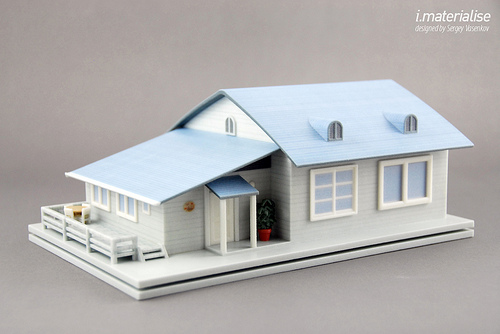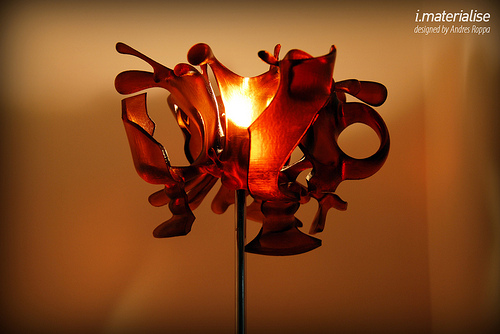Shapeways: Revenue, Profit, Competitors
In a Dutch interview Shapeways CEO Peter Weijmarshausen talks about some interesting Shapeways facts. The company generated 244,000 Euro in Revenue over 2009. During the same period Shapeways lost 1,400,000 Euro. He also mentions that the outsourced production companies Shapeways uses to make its 3D prints are 3D printing 7 days a week and 24 hours a day. Peter mentions that the Shapeways sells 10,000 objects a month and reiterates that Union Square Ventures & Index Ventures have put $5 million into the company.
Having helped launch Shapeways and worked there for more than two years I’m happy that Peter can disclose its success so far. I’m very happy for the people that still are at Shapeways and do hope they have a lot more success in the future. I’m less happy with the statement in the article that the architectural models on i.materialise are more expensive than they would be on Shapeways.
Shapeways vs. i.materialse: who is cheaper?
The architectural models are large objects and the same houses on Shapeways would always be more expensive than on i.materialise. The price of 359 Euro on i.materialise is for any house that fits into the volume of 23 x 16 x 15 cm. The majority of the houses we sell have a volume of around 2500 cubic cm. The same model would cost $2475 on Shapeways. At i.materialise however it would cost only $490 (359 Euro). You could even make a house that fit the entire volume of 5520 cubic cm with us for the price of $490. The same exact thing bought on Shapeways would set you back $5465.
i.materialise is currently generally more expensive for small things. However we remain cheaper for any large items and for series of items. If you want 5 or ten copies of something we should also always be cheaper. You order to same model several times by adjusting the ‘quantity’ option on our 3D print lab.
Are i.materialise and Shapeways competitors?
I think it is interesting that Sprout considers i.materialise a Shapeways competitor. I guess we do compete in offering tools that let people design things and customize their own items. But, if we look at our ‘create Your own lamp tool’ for example you can see that our focus is different. What we are trying to do is fundamentally different from Shapeways. Shapeways is a marketplace where people can sell 3D printed items. i.materialise however is a production partner for designers and inventors. We want to be the power behind your brand. This means that we will focus on higher quality and have more choices for designers.
- We offer more 3D printing materials and finishes compared to Shapeways.
- We also have the world’s largest 3D printers capable of printing things 2 meters or more in length. And in every single material we have some of the largest machines available.
- Our customer service team is standing by to fix and repair your designs. We can also give you engineering advice and have an unparalleled depth of knowledge in 3D printing building on the experience of 1000 of our colleagues and decades of experience.
- We aim to, above all, deliver high quality and reliability.
All the while you will “own the customer” and sales will occur through your website and your brand. As I’ve stated before the it is Supabold with its Fluid Vase that is being mentioned in design magazines and on some of the largest blogs in the world, not us. Shapeways is basically eBay in that it democratizes the sale of 3D printed items through a marketplace. We however democratize production through being your partner behind the scenes. Nevertheless I really am happy with Shapeways’ success and continue to wish them the best in the future.
Recommended Articles
No related posts.





